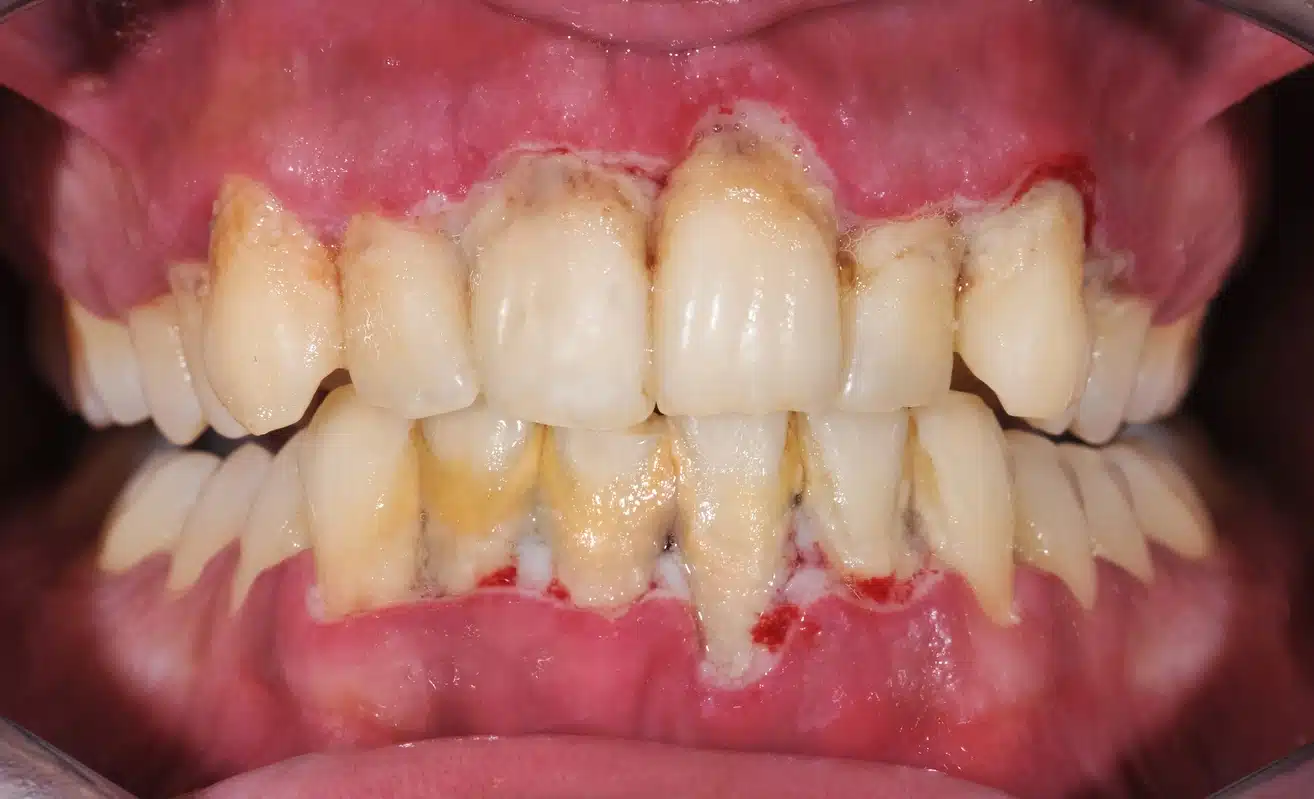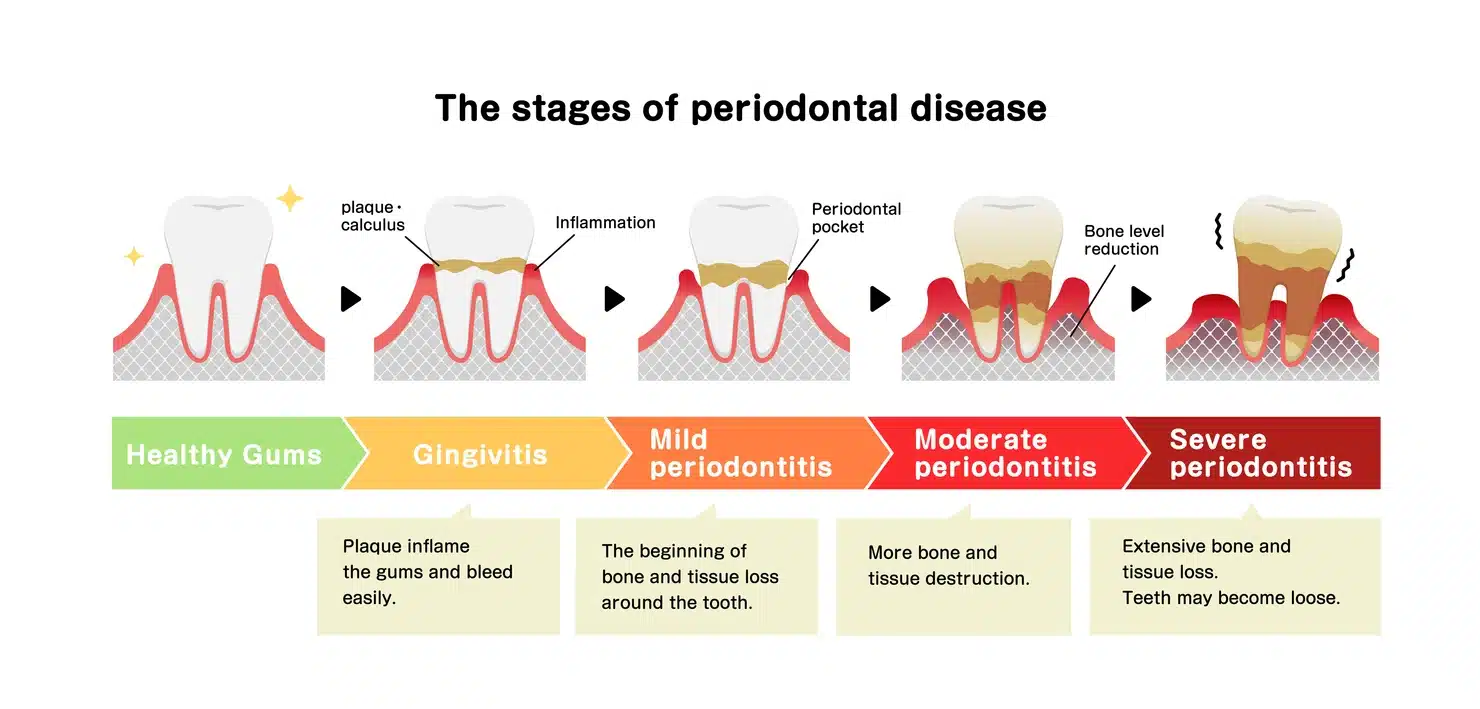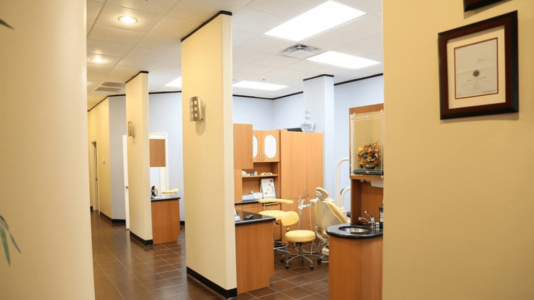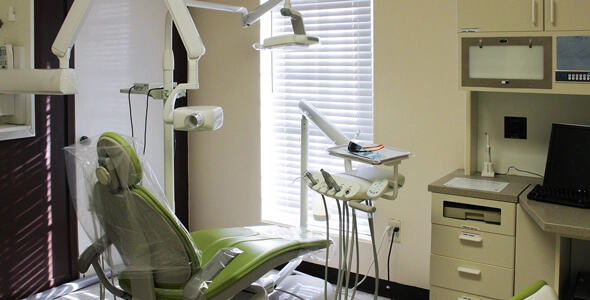Bacteria are naturally present in the mouth. Proper oral hygiene habits can keep bacteria under control, but without this, bacteria can build up and turn into plaque- which can result in gum disease.
The early stage of gum disease is known as gingivitis. One of the most common symptoms of gingivitis is gum inflammation. However, it is possible to have this condition and now realize it because many patients have no symptoms at all.
When left untreated, gingivitis will progress into periodontitis, which is an advanced stage of gum disease. This can lead to damage to the gums and jawbone, along with tooth loss.
A Dental Care can diagnose and treat gum disease during your check-ups. However, if you have concerns between checkups, it’s important to see the dentist right away. The earlier a problem is diagnosed, the better the outcome.
What is Gingivitis?
Gingivitis is the earliest stage of gum disease. In some cases, there are no symptoms at all, while in others the symptoms often come and go. When addressed early, the condition can be reversed.
Symptoms of Gingivitis
The most common symptoms of gingivitis include:
- Tender gums that bleed easily when brushing/flossing
- Randomly bleeding gums
- Swollen/puffy gums
- Bad breath
- Dusky/dark red gums
- Receding gums
Treatment for Gingivitis
The primary goal of treatment is to reduce inflammation. Treatment options for gingivitis include:
Oral hygiene
This includes properly brushing at least twice daily and flossing at least once. If you’re not sure about how to properly brush/floss, your dentist can help.
Professional Cleanings
The American Dental Association recommends that people visit the dentist every 6 months for an exam and deep cleaning. This will help to diagnose and treat gingivitis early before it progresses into periodontitis.
Antiseptic Mouthwash
Prescription mouthwash containing chlorhexidine can reduce bacteria levels in the mouth.
What is Periodontitis?
When left untreated, gingivitis will progress into a more severe form of gum disease known as periodontitis. This condition is characterized by inflammation of the gum tissue and jawbone that keep teeth in place. If left untreated, this condition can ultimately lead to gum recession and tooth loss.
Symptoms of Periodontitis
There are three stages of periodontitis: early, moderate, and advanced. The early stage consists of the gums pulling away from teeth, creating small pockets where bacteria can collect. The moderate stage is characterized by the loss of bone support which leads to the loosening of teeth. The advanced stage is characterized by pain when chewing, bad breath, and a foul taste as well as tooth loss.
The most common symptoms of periodontitis include:
- Tender gums that bleed when brushing/flossing
- Bad breath/foul taste
- Pain when chewing
- Receding gums
- Tooth loss
- Gum inflammation
- Inflammatory response in other areas of the body
Typically, the symptoms in the early stage are not noticeable but can be detected by the dentist during an exam and cleaning.
Treatment for Periodontitis
The primary goal of treatment is to remove bacteria and plaque from teeth and gum pockets. The most common treatments include:
Oral Hygiene
Proper brushing and flossing can keep your teeth and gums clean, reducing bacteria levels in your mouth. Dentists recommend that you brush twice daily with a soft-bristled, electric toothbrush, floss at least once, avoid smoking and other tobacco products, and visit the dentist every 6 months for a comprehensive exam and cleaning.
Professional Cleanings
The dentist will remove plaque and tartar buildup from the roots, as well as polish teeth and treat them with fluoride. If a patient has deep periodontal pockets, a procedure known as scaling and root planing may be necessary.
Antibiotics
If a gum infection does not respond to cleaning, antibiotics may be prescribed in the form of a tablet/capsule, gel, or mouthwash.
Follow-up Appointments
In a few weeks, a follow-up appointment will be needed to check the results of the procedures. After that, appointments will be required every 3 to 6 months to check progress. If inflammation is still present, surgery may be necessary.
Surgery
When the condition persists, gum flap surgery may be necessary to clean bacteria and plaque deposits under the gums. If the jawbone has deteriorated, bone graft surgery may be recommended.
How Gingivitis Progresses to Periodontitis?
Gingivitis is the mildest form of gum disease. If left untreated, bacteria and tartar will continue to increase which will harden and turn into plaque. This ultimately leads to periodontitis and, if still left untreated, the condition can progress even further to gum recession and tooth loss.
What Factors Contribute to Gingivitis and Periodontitis?
The most common factors contributing to gingivitis and periodontitis is plaque buildup, which is due to bacteria in the mouth. This leads to gum inflammation. Other factors include:
Hormonal Changes
Hormonal changes during puberty and pregnancy can increase the risk of gingivitis and plaque buildup.
Medications
Some medications cause gums to enlarge, which makes it harder to properly clean the teeth. Additionally, some medications reduce saliva production, which is critical to controlling bacteria and keeping teeth clean.
Nutrition
Finally, excessive consumption of refined carbohydrates and low levels of vitamin C can increase gum inflammation.
How to Prevent Gingivitis and Periodontitis
The best way to prevent gingivitis and periodontitis is:
- Practicing proper oral hygiene habits including brushing/flossing as directed and visiting the dentist twice a year
- Healthy lifestyle habits including proper nutrition and quitting smoking or use of other tobacco products
The team at A Dental Care can help you take care of your oral health, which can improve your overall health.













